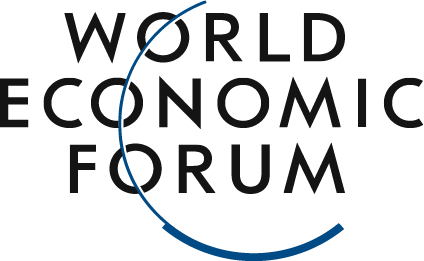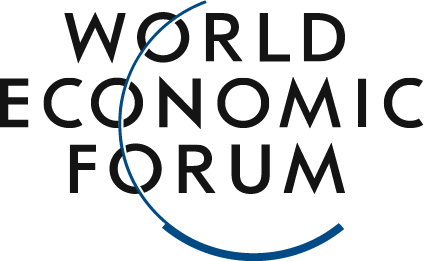Image source:Shutterstock
Han Lino
President and CEO of State Street Corporation
Since the COVID-19 pandemic, the global economy has undergone earth-shattering changes.
Major structural changes are underway, driven primarily by five fundamental forces: deglobalization, decarbonization, debt dynamics, digital transformation, and demographic shifts.
Compared to just a few years ago, the global economy today looks vastly different. Since the COVID-19 pandemic, significant structural shifts have been taking place. Decoupling, decarbonization, demographic changes, soaring debt levels, and digital transformation are all reshaping the global economy and financial markets.These five fundamental forces ("5D") create a multidimensional decision-making space for policymakers and investors. Each of these forces requires careful evaluation, as they have the potential to deliver transformative impact.As trade tensions, geopolitical competition, and renewed concerns about supply-chain vulnerabilities fuel the resurgence of economic nationalism and trade regionalization, the tide of globalization is accelerating its retreat. According to data from the International Monetary Fund (IMF), global trade restrictions have surged from around 1,000 annually in 2019 to more than 3,000 in 2023. Meanwhile, the newly formed Trump administration has already signaled its intention to pursue even more U.S.-centric tariff-based policies, a move that could drive this number even higher.Deglobalization has posed significant challenges to economic growth and markedly intensified inflationary pressures. Trade fragmentation has eroded the efficiency gains from specialization and competition, while also curtailing economies of scale. Meanwhile, financial fragmentation has constrained cross-border capital flows, contributing to greater macro-financial volatility. Research from the International Monetary Fund (IMF) and the Bank for International Settlements (BIS) indicates that, even when accounting for other inflationary factors, open economies typically experience lower inflation rates.The impact of deglobalization varies across the globe. Emerging and developing economies, which rely heavily on foreign direct investment and face risks related to energy and commodity supplies, may be particularly affected. Moreover, given the dollar's dominant role in settlement systems, its continued strength could further strain these economies. Importantly, deglobalization might hinder efforts to tackle global challenges such as climate change.Meanwhile, as existing trade relationships break down and new ones take shape, some countries or regions may stand to benefit. With U.S.-China relations becoming increasingly unstable, Southeast Asia is witnessing the emergence of fresh trade patterns.Renowned climatologist Veerabhadran Ramanathan warns that if emissions remain unchecked, global warming could accelerate faster than we expect—potentially triggering a climate crisis by 2030, one comparable in scale to the COVID-19 pandemic. Meanwhile, the impacts of climate change—such as increasingly severe wildfires in Australia, unprecedented rainfall in Dubai, devastating floods across Europe, and more frequent hurricanes in the U.S.—are already becoming stark realities. These extreme weather events are also driving inflation, as they demand significant financial resources to rebuild and restore affected areas.Adapting to climate change is now a top priority for safeguarding against extreme weather events. Regardless of the pace of climate change, adapting will require significant funding and financial support—yet this very need could fuel inflation, since productivity or the tax base may not keep up. While green bonds and sustainable loans are on the rise, their current scale remains insufficient to meet these growing challenges. As a result, governments will need to step in with some form of fiscal support to bridge the gap.Demographic shifts, including population aging, are leading to a gradual decline in the workforce. Longer life expectancies and declining birth rates are further straining fiscal resources as societies grapple with the growing financial burden of providing healthcare and retirement benefits for an aging population. As highlighted at the Federal Reserve’s Jackson Hole conference, financial markets have become increasingly sensitive to these fiscal pressures—and their potential impact on monetary policy. However, reshaping the social contract remains fraught with uncertainty: both aging populations and rising dependency ratios could undermine productivity, fuel inflationary pressures, and simultaneously intensify the fiscal challenges facing economies.Increased government spending will add to the nation’s debt burden, which has already reached record levels. According to data from the World Economic Forum, global debt recently hit a staggering $307 trillion—largely driven by developed nations. In fact, global fiscal support provided during the COVID-19 pandemic alone pushed government debt in advanced economies to an all-time high of $50 trillion. On top of this, with interest rates at their highest level in two decades, there’s a strong likelihood that risk premiums on additional debt issuance will rise, further inflating borrowing costs. Take the U.S., for instance: by 2025, debt servicing costs are projected to surpass the defense budget—and this trend could very well worsen in the years ahead.Increased debt will constrain the government's ability to invest in infrastructure, education, and research—areas that are critical drivers of long-term economic growth. Moreover, if continued government borrowing pushes interest rates higher, it could raise capital costs for the private sector, potentially triggering a crowding-out effect. This impact is particularly acute for some U.S. companies with high-yield debt, as they face significant challenges from looming debt maturities: roughly $200 billion in debt is set to mature between 2024 and 2025, while an estimated $1.1 trillion in debt is due from 2024 to 2028.Against the backdrop of significant challenges to global economic growth, the trend toward digitalization stands in stark contrast. While the outlook remains uncertain, digitalization, artificial intelligence, and broader technological innovation hold the promise of becoming a crucial counterbalance to the forces hindering growth. Take, for instance, the economic potential of generative AI (GenAI): estimates suggest that widespread adoption of GenAI technologies could boost productivity by approximately 1.5% annually, unlocking total economic benefits across industries ranging from $2.6 trillion to $4.4 trillion. Although history has taught us to remain cautious about technology’s disruptive impact, GenAI’s defining characteristics—its accessibility and versatility—are likely to help this technology overcome past hurdles, enabling innovation to deliver even more transformative and meaningful outcomes.A New Era of Global GrowthThe interactions among these forces are highly complex. Increased tariffs lead to reduced economic activity, which in turn shrinks tax revenues and deepens fiscal deficits. Meanwhile, investments in decarbonization and efforts to address demographic shifts are also putting additional pressure on public finances. Together, these factors could spark inflation and undermine the effectiveness of monetary policy. On the flip side, advancements in digital technologies—particularly GenAI—are poised to optimize energy consumption, accelerate the development of clean technologies, and potentially ease inflationary pressures. Moreover, large-scale adoption of these innovations could drive broader productivity gains across the economy.While these fundamental forces pose significant challenges to economic growth, they also create unique opportunities for many industries—particularly the financial sector. To meet evolving demands, it is essential to mobilize and effectively manage vast flows of capital. Under the interplay of these forces, the market’s dynamic shifts can unlock opportunities for wealth and asset management firms, liquidity providers, and innovative risk-management tools. By remaining agile in responding to market dynamics—and seamlessly integrating front- and back-end operations—we can better navigate the multifaceted challenges brought about by these transformative trends.
The above content solely represents the author's personal views.This article is translated from the World Economic Forum's Agenda blog; the Chinese version is for reference purposes only.Feel free to share this in your WeChat Moments; please leave a comment at the end of the post or on our official account if you’d like to republish.
Translated by: Sun Qian | Edited by: Wang Can
The World Economic Forum is an independent and neutral platform dedicated to bringing together diverse perspectives to discuss critical global, regional, and industry-specific issues.
Follow us on Weibo, WeChat Video Accounts, Douyin, and Xiaohongshu!
"World Economic Forum"





